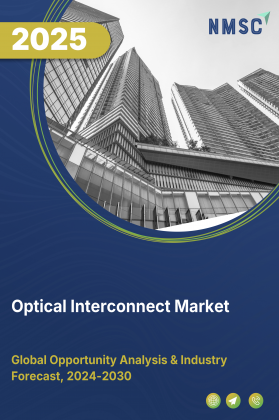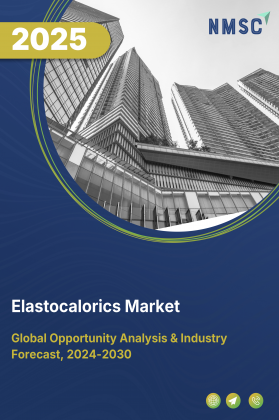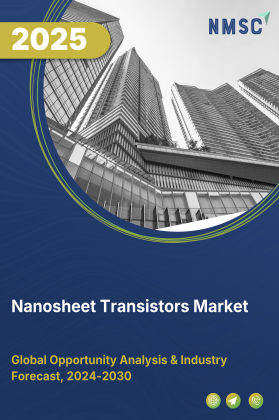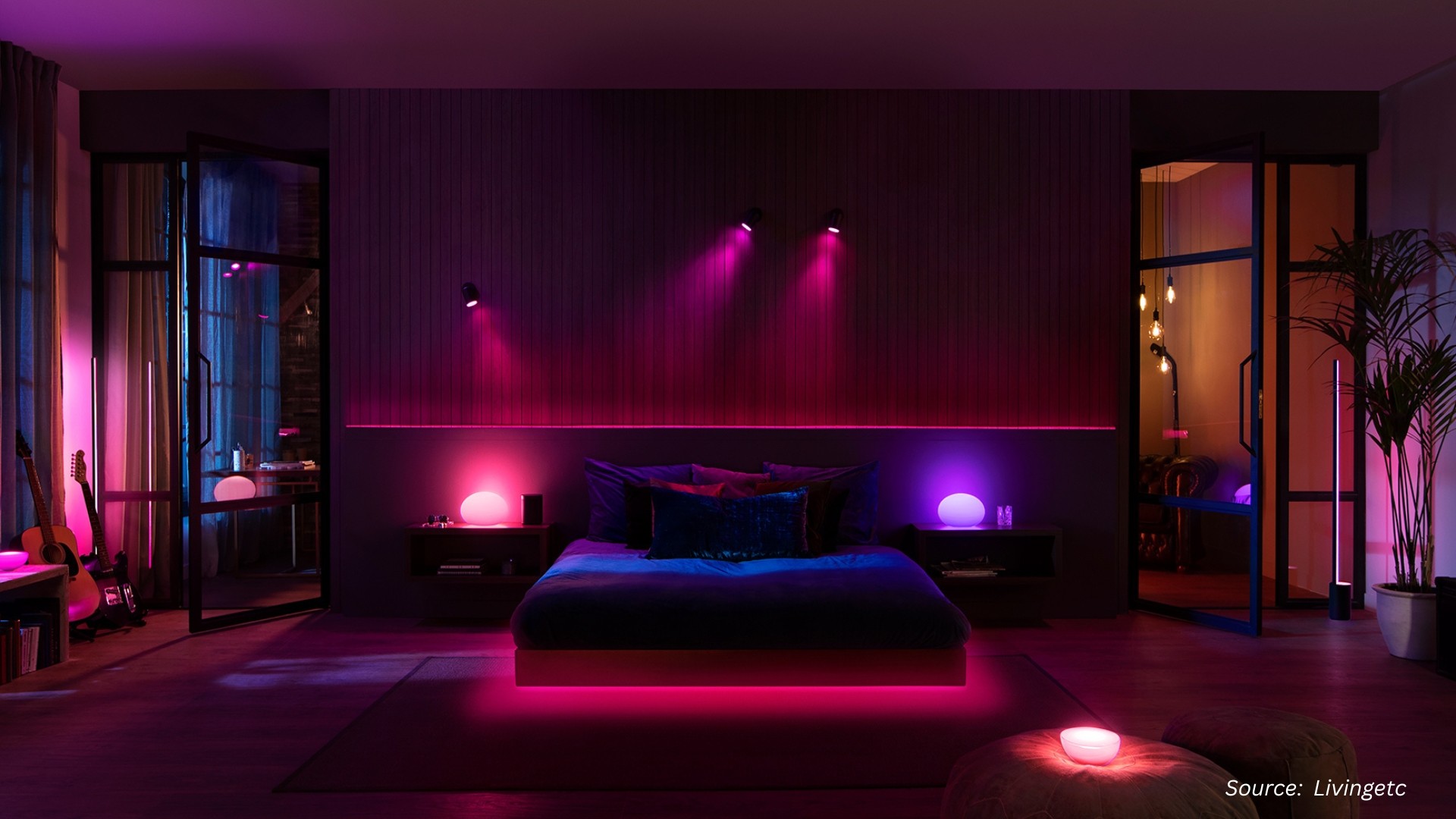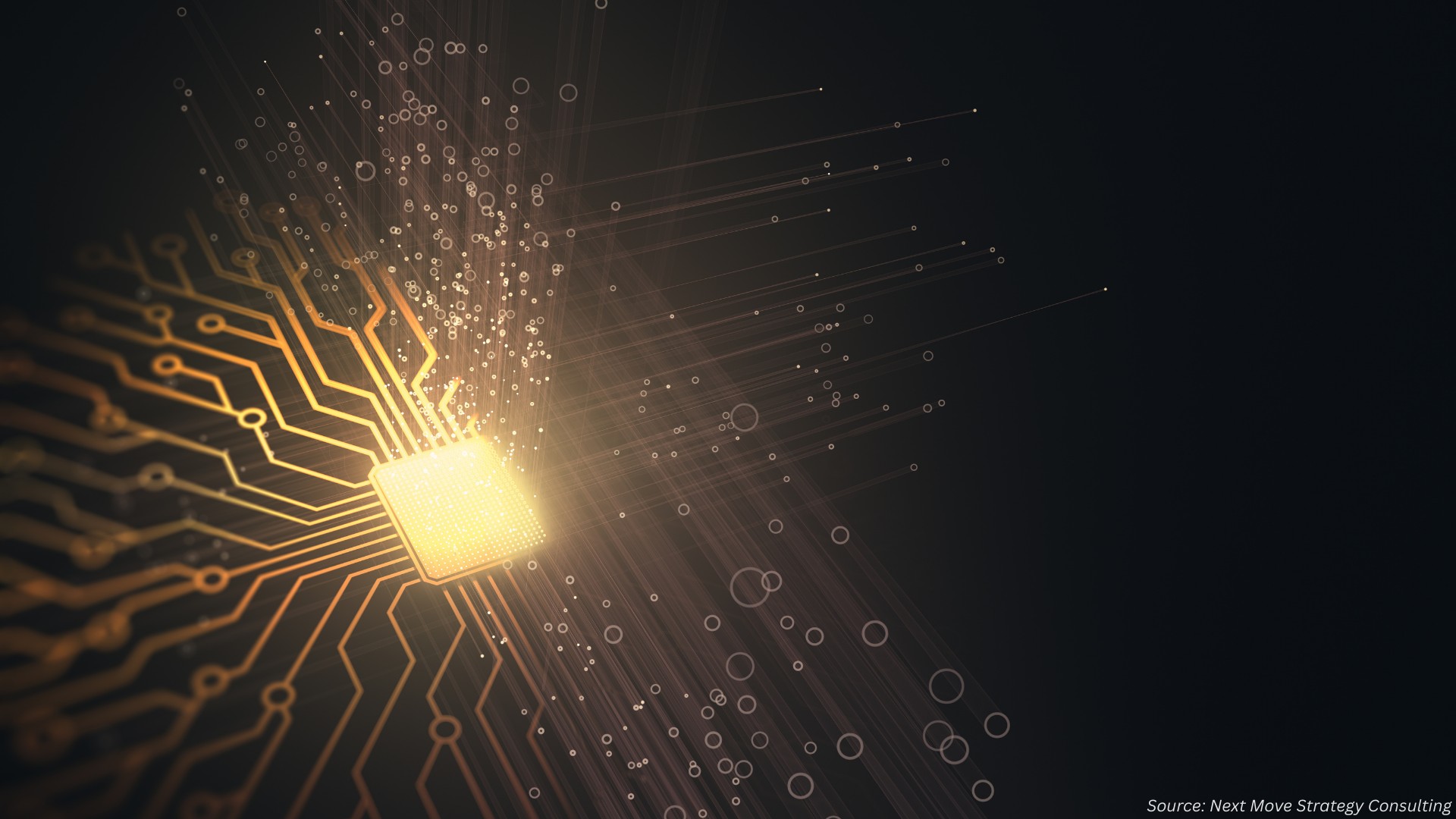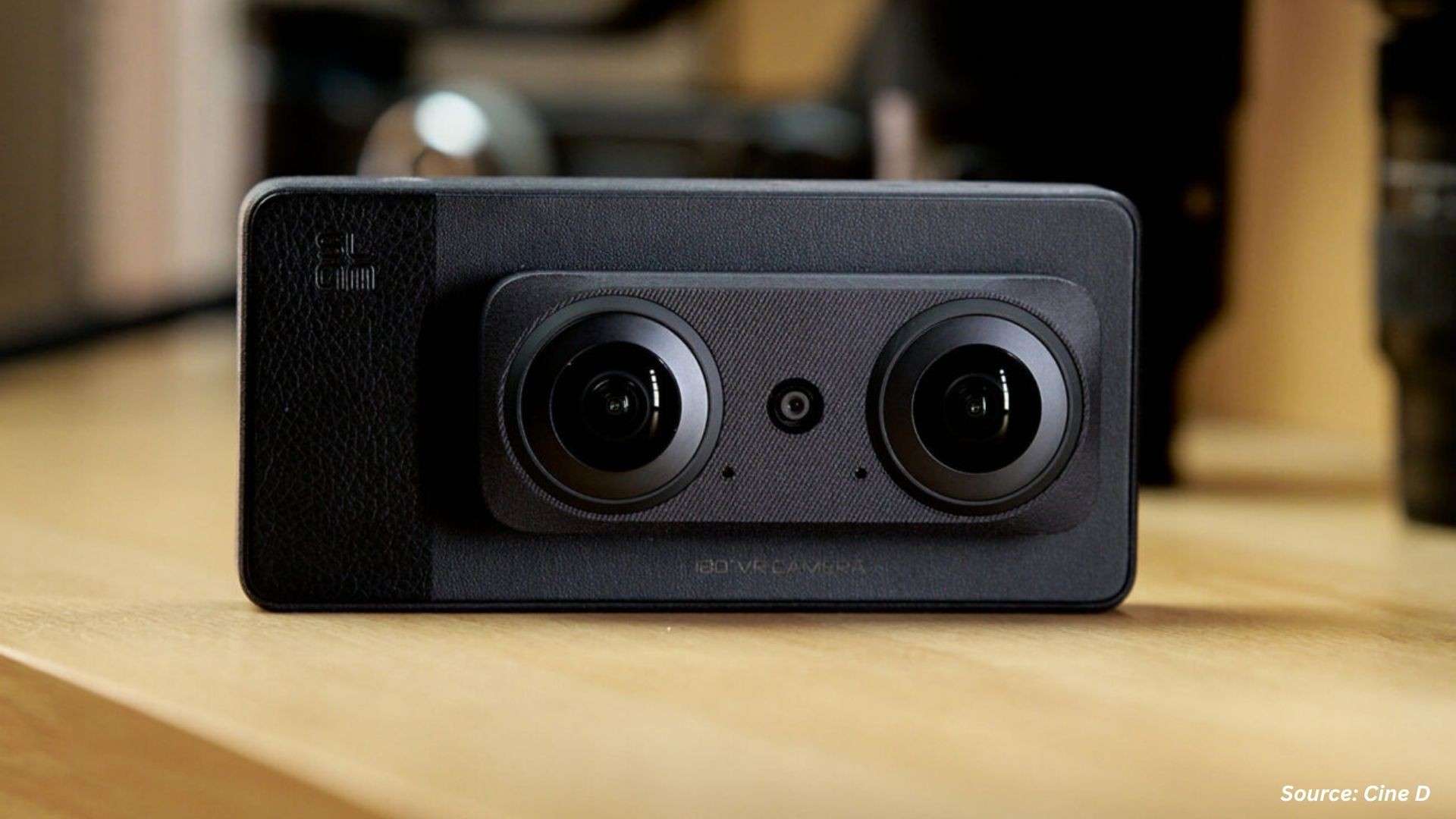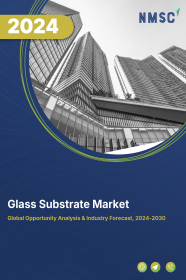
Glass Substrate Market by Type (Borosilicate, Silicon, Ceramics, and Quartz) and by End-User (Electronics and Semiconductors, Automotive, Medical, Aerospace and Defense, Solar, and Architectural) – Global Opportunity Analysis and Industry Forecast 2024-2030
Glass Substrate Market Overview
The global Glass Substrate Market size was valued at USD 6.88 billion in 2023 and is predicted to reach USD 9.55 billion by 2030 with a CAGR of 4.8% from 2024-2030.
A glass substrate is also referred to as glass wafer that is a thin, flat sheet of glass used as a foundational material in various industries including electronics, optics, and display technology among others. It serves as a base for depositing materials such as semiconductors and coatings during manufacturing processes. Glass substrates are essential in the manufacturing of LCD screens, solar panels, thin-film transistors, precision optics, and sensors.
The key benefits of glass substrate include high transparency, thermal stability, chemical resistance and a smooth surface, making them ideal for high-precision applications. These properties allow for minimal light distortion, the ability to withstand high temperatures, and protection from chemical damage.
Compared to alternatives options such as plastic or metal, glass substrates offer superior durability, optical clarity, and resistance to heat and deformation. These qualities make them essential for advanced electronic displays and optical devices that demand long-lasting performance and reliability.
Market Dynamics and Trends
The growing demand for consumer electronics like smart TVs and phones is driving the glass substrate market growth, as glass substrates are vital for high-resolution displays and touchscreens, offering clarity and durability. This supports the overall performance of electronic components., For example, Google announced that the android TV’s monthly active users accounted for 110 million in 2022 at the Consumer Electronic Show (CES) 2023 a growth of 35% compared to the previous year. This rising demand for sophisticated electronic devices drives the expansion of the market, as manufacturers seek innovative solutions to meet the needs of modern consumer electronics.
Moreover, the rapidly growing electric vehicle (EV) industry further fuels the growth of the market due to the increasing demand for advanced glass components in electric vehicles. The need for high-quality displays, touchscreens, and aerodynamic glass panels in EVs drives the requirement for specialized glass substrates that offer durability, clarity, and enhanced performance. According to the latest report published by the India Brand Equity Foundation (IBEF), the global EV market valued at USD 250 billion in 2021 and it is projected to reach to USD 1.32 trillion by 2028. The integration of glass substrates in EVs supports improved vehicle aesthetics, functionality, and safety features that in turn contributes to the expansion of the market.
Furthermore, the rapid investment towards the defense sector further fuels the market growth by incorporating glass substrate into the defense sector particularly in advanced guidance, targeting, and communication systems that are crucial for arms and ammunitions. According to the latest report published by the World Bank Group, the global military expenditure reached USD 2.21 trillion in 2022, marking a 33.9% increase from USD 1.65 trillion in 2016 over six years. The expansion of defense budgets and the development of new technologies increases the demand for specialized glass substrates that ultimately accelerates the expansion of the market.
However, the high manufacturing and logistic costs associated with glass substrate industry hinders the growth of the market.
On the contrary, the integration of glass substrates with micro light-emitting diodes (LEDs) presents significant growth opportunity for the market. The technology offers enhanced energy efficiency, higher resolution displays, and improved brightness, making it ideal for next-generation screens and displays. For instance, in October 2023, Ledman collaborates with WG Tech and launched world’s first PM glass substrate micro-LED display screen. The superior optical clarity and thermal stability of glass substrates make them ideal for supporting micro-LEDs by enhancing their performance and durability that creates future growth expansion in the market.
Market Segmentation and Scope of Study
The glass substrate market report is divided on the basis of type, end-user, and region. On the basis of type, the market is categorized into borosilicate, silicon, ceramics, and quartz. On the basis of end-users, the market is bifurcated into electronics and semiconductors, automotive, medical, aerospace and defense, solar, and architectural. Regional breakdown and analysis of each of the aforesaid segments includes regions comprising of Asia-Pacific, North America, Europe, and RoW.
Geographical Analysis
Asia-Pacific dominates the glass substrate market share at present and is projected to continue its dominance throughout the forecast period. The rapidly rising sales of consumer electronics products such as smartphone, tablets, and TVs across the region drives the glass substrate industry.
According to a recent report from the Shanghai Municipal People’s Government, smartphone sales in China are estimated to reach 287 million in 2024, marking a 3.6% increase from the previous year. This surge in demand for advanced devices fuels the growth of the market as manufacturers seek to meet the needs of modern display technologies.
Moreover, the growing semiconductor industry further fuels the growth of the sector in the region as it drives the glass substrate market demand for advanced glass substrates used in semiconductor manufacturing processes.
Glass substrates are essential for the production of semiconductor components, including integrated circuits and microchips due to their superior thermal stability, electrical insulation, and surface precision.
As per the latest report published by the International Trade Administration (ITA), semiconductors are South Korea’s largest export item accounting for 18.9% of the country’s total export in 2022. This demand is supported by the rise in electronics and digital devices that rely on semiconductor technologies, driving the overall growth of the industry in the region.
On the other hand, North America is expected to show a steady rise in the glass substrate industry. This is due to the significant investment toward healthcare expenditure, that drives the demand for advanced medical equipment and devices that rely on glass substrates. Glass substrates are critical in medical imaging technologies, diagnostic tools, and display systems used in hospitals and clinics.
As per the latest report published by the World Bank Group, the healthcare expenditure in North America accounted for USD 11,818 per capita in 2022 as compared the USD 8,791 in 2015 with a growth of 34% from 2018-2022. The adoption of more sophisticated and high-precision equipment by healthcare providers increases the need for reliable and durable glass substrates, contributing to the growth of the glass substrate industry in the region.
Furthermore, the rapid expenditure toward the defense sector further fuels the growth of the industry in the region as it drives demand for advanced optical and electronic components used in military equipment. The defense industry relies on glass substrates for applications in surveillance systems, communication devices, and targeting technologies, where high precision and durability are crucial.
As per the latest report published by the World Bank Group, the military expenditure of the U.S. accounted for USD 876.94 billion in 2022 as compared to USD 646.75 billion in 2017 with a significant growth of 36% within the time span of five years. Thus, the increasing investment in defence technologies amplify the need for high-performance glass substrates, contributing to the expansion of the glass substrate industry in the region.
Competitive Landscape
Various key players in the glass substrate industry includes AGC Inc., Schott AG, Corning Incorporated, Nippon Electric Glass Co. Ltd., Plan Optik AG, Hoya Corporation, Xinyi Glass Holdings Limited, Toppan Inc., Saint-Gobain, AMD, Ltd., and others. These companies are opting strategies including product launches to maintain their dominance and competitiveness in the market.
For instance, in September 2024, AMD plans to launch glass substrate between 2025 and 2026 and to collaborate with global component companies to maintain its leading position. Simultaneously, in September 2022, Saint-Gobain launched ORAE, a low-carbon glass product that offers reduction in carbon footprint without compromising on technical, quality, or aesthetic performance.
Additionally, in June 2022, Nippon Electric Glass Co., Ltd., launched two products for 5G millimetre-wave wireless communication technology, a transparent antenna made of a glass substrate and a repeater that uses radio wave lenses and requires no power supply.
Key Benefits
-
The report provides quantitative analysis and estimations of the glass substrate market from 2024 to 2030, that assists in identifying the prevailing market opportunities.
-
The study comprises a deep-dive analysis of the current and future glass substrate market trends to depict prevalent investment pockets in the industry.
-
Information related to key drivers, restraints, and opportunities and their impact on the glass substrate market is provided in the report.
-
Competitive analysis of the players, along with their market share is provided in the report.
-
SWOT analysis and Porters Five Forces model is elaborated in the study.
-
Value chain analysis in the market study provides a clear picture of roles of stakeholders.
Glass substrate market Key Segments
By Type
-
Borosilicate
-
Silicon
-
Ceramics
-
Quartz
By End-User
-
Electronics and Semiconductors
-
Automotive
-
Medical
-
Aerospace and Defense
-
Solar
-
Architectural
By Region
-
North America
-
U.S
-
Canada
-
Mexico
-
-
Europe
-
The UK
-
Germany
-
France
-
Italy
-
Spain
-
Denmark
-
Netherlands
-
Finland
-
Sweden
-
Norway
-
Russia
-
Rest of Europe
-
-
Asia-Pacific
-
China
-
Japan
-
India
-
South Korea
-
Australia
-
Indonesia
-
Singapore
-
Taiwan
-
Thailand
-
Rest of Asia-Pacific
-
-
Rest of the World
-
Latin America
-
Middle East
-
Africa
-
Key Players
-
AGC Inc.
-
Schott AG
-
Corning Incorporated
-
Nippon Electric Glass Co. Ltd.
-
Plan Optik AG
-
Hoya Corporation
-
Xinyi Glass Holdings Limited
-
Toppan Inc.
-
Saint-Gobain
-
AMD
REPORT SCOPE AND SEGMENTATION:
|
Parameters |
Details |
|
Market Size in 2023 |
USD 6.88 Billion |
|
Revenue Forecast in 2030 |
USD 9.55 Billion |
|
Growth Rate |
CAGR of 4.8% from 2024 to 2030 |
|
Analysis Period |
2023–2030 |
|
Base Year Considered |
2023 |
|
Forecast Period |
2024–2030 |
|
Market Size Estimation |
Billion (USD) |
|
Growth Factors |
|
|
Countries Covered |
28 |
|
Companies Profiled |
10 |
|
Market Share |
Available for 10 companies |
|
Customization Scope |
Free customization (equivalent to up to 80 working hours of analysts) after purchase. Addition or alteration to country, regional, and segment scope. |
|
Pricing and Purchase Options |
Avail customized purchase options to meet your exact research needs. |




















 Speak to Our Analyst
Speak to Our Analyst



